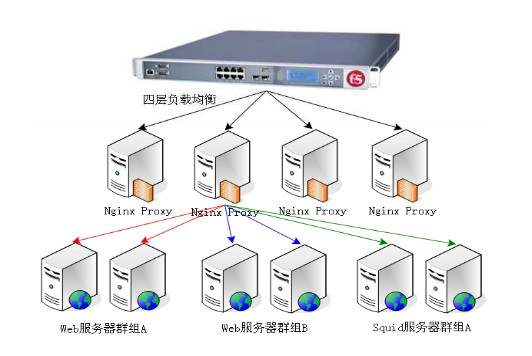您好,登錄后才能下訂單哦!
您好,登錄后才能下訂單哦!
下文給大家帶來Sink Processors(故障轉移與負載均衡)的測試方法詳解,希望能夠給大家在實際運用中帶來一定的幫助,負載均衡涉及的東西比較多,理論也不多,網上有很多書籍,今天我們就用億速云在行業內累計的經驗來做一個解答。
Sink groups允許組織多個sink到一個實體上。 Sink processors能夠提供在組內所有Sink之間實現負載均衡的能力,而且在失敗的情況下能夠進行故障轉移從一個Sink到另一個Sink。
簡單的說就是一個source 對應一個Sinkgroups,即多個sink,這里實際上與第六節的復用/復制情況差不多,只是這里考慮的是可靠性與性能,即故障轉移與負載均衡的設置。
下面是官方配置:
Property Name | Default | Description |
sinks | – | Space-separated list of sinks that are participating in the group |
processor.type | default | The component type name, needs to be default, failover or load_balance |
從參數類型上可以看出有3種Processors類型:default, failover(故障轉移)和 load_balance(負載均衡),當然,官網上說目前自定義processors 還不支持。
下面是官網例子
a1.sinkgroups=g1
a1.sinkgroups.g1.sinks=k1 k2
a1.sinkgroups.g1.processor.type=load_balance

DefaultSink Processor 接收單一的Sink,不強制用戶為Sink創建Processor,前面舉了很多例子。所以這個就不多說了。
FailoverSink Processor會通過配置維護了一個優先級列表。保證每一個有效的事件都會被處理。
故障轉移的工作原理是將連續失敗sink分配到一個池中,在那里被分配一個冷凍期,在這個冷凍期里,這個sink不會做任何事。一旦sink成功發送一個event,sink將被還原到live 池中。
在這配置中,要設置sinkgroups processor為failover,需要為所有的sink分配優先級,所有的優先級數字必須是唯一的,這個得格外注意。此外,failover time的上限可以通過maxpenalty 屬性來進行設置。
下面是官網配置:
Property Name | Default | Description |
sinks | – | Space-separated list of sinks that are participating in the group |
processor.type | default | The component type name, needs to be failover |
processor.priority.<sinkName> | – | <sinkName> must be one of the sink instances associated with the current sink group |
processor.maxpenalty | 30000 | (in millis) |
下面是官網例子
a1.sinkgroups=g1
a1.sinkgroups.g1.sinks=k1 k2
a1.sinkgroups.g1.processor.type=failover
a1.sinkgroups.g1.processor.priority.k1=5
a1.sinkgroups.g1.processor.priority.k2=10
a1.sinkgroups.g1.processor.maxpenalty=10000
這里首先要申明一個sinkgroups,然后再設置2個sink ,k1與k2,其中2個優先級是5和10,而processor的maxpenalty被設置為10秒,默認是30秒。‘
下面是測試例子
[html] view plain copy
#配置文件:failover_sink_case13.conf
#Name the components on this agent
a1.sources= r1
a1.sinks= k1 k2
a1.channels= c1 c2
a1.sinkgroups= g1
a1.sinkgroups.g1.sinks= k1 k2
a1.sinkgroups.g1.processor.type= failover
a1.sinkgroups.g1.processor.priority.k1= 5
a1.sinkgroups.g1.processor.priority.k2= 10
a1.sinkgroups.g1.processor.maxpenalty= 10000
#Describe/configure the source
a1.sources.r1.type= syslogtcp
a1.sources.r1.port= 50000
a1.sources.r1.host= 192.168.233.128
a1.sources.r1.channels= c1 c2
#Describe the sink
a1.sinks.k1.type= avro
a1.sinks.k1.channel= c1
a1.sinks.k1.hostname= 192.168.233.129
a1.sinks.k1.port= 50000
a1.sinks.k2.type= avro
a1.sinks.k2.channel= c2
a1.sinks.k2.hostname= 192.168.233.130
a1.sinks.k2.port= 50000
# Usea channel which buffers events in memory
a1.channels.c1.type= memory
a1.channels.c1.capacity= 1000
a1.channels.c1.transactionCapacity= 100
這里設置了2個channels與2個sinks ,關于故障轉移的設置直接復制官網的例子。我們還要配置2個sinks對于的代理。這里的2個接受代理我們沿用之前第六章復制的2個sink代理配置。
下面是第一個接受復制事件代理配置
[html] view plain copy
#配置文件:replicate_sink1_case11.conf
# Name the components on this agent
a2.sources = r1
a2.sinks = k1
a2.channels = c1
# Describe/configure the source
a2.sources.r1.type = avro
a2.sources.r1.channels = c1
a2.sources.r1.bind = 192.168.233.129
a2.sources.r1.port = 50000
# Describe the sink
a2.sinks.k1.type = logger
a2.sinks.k1.channel = c1
# Use a channel which buffers events inmemory
a2.channels.c1.type = memory
a2.channels.c1.capacity = 1000
a2.channels.c1.transactionCapacity = 100
下面是第二個接受復制事件代理配置:
[html] view plain copy
#配置文件:replicate_sink2_case11.conf
# Name the components on this agent
a3.sources = r1
a3.sinks = k1
a3.channels = c1
# Describe/configure the source
a3.sources.r1.type = avro
a3.sources.r1.channels = c1
a3.sources.r1.bind = 192.168.233.130
a3.sources.r1.port = 50000
# Describe the sink
a3.sinks.k1.type = logger
a3.sinks.k1.channel = c1
# Use a channel which buffers events inmemory
a3.channels.c1.type = memory
a3.channels.c1.capacity = 1000
a3.channels.c1.transactionCapacity = 100
#敲命令
首先先啟動2個接受復制事件代理,如果先啟動源發送的代理,會報他找不到sinks的綁定,因為2個接事件的代理還未起來。
flume-ng agent -cconf -f conf/replicate_sink1_case11.conf -n a1 -Dflume.root.logger=INFO,console
flume-ng agent -cconf -f conf/replicate_sink2_case11.conf -n a1 -Dflume.root.logger=INFO,console
在啟動源發送的代理
flume-ng agent -cconf -f conf/failover_sink_case13.conf -n a1 -Dflume.root.logger=INFO,console
啟動成功后
打開另一個終端輸入,往偵聽端口送數據
echo "hello failoversink" | nc 192.168.233.128 50000
#在啟動源發送的代理終端查看console輸出
因為k1的優先級是5,K2是10因此當K2正常運行的時候,是發送到K2的。下面數據正常輸出。
然后我們中斷K2的代理進程。
再嘗試往偵聽端口送數據
echo "hello close k2"| nc 192.168.233.128 50000
我們發現源代理發生事件到K2失敗,然后他將K2放入到failover list(故障列表)
因為K1還是正常運行的,因此這個時候他會接收到數據。
然后我們再打開K2的大理進程,我們繼續往偵聽端口送數據
echo " hello open k2 again" | nc192.168.233.128 50000
數據正常發生,Failover SinkProcessor測試完畢。
負載均衡片處理器提供在多個Sink之間負載平衡的能力。實現支持通過round_robin(輪詢)或者random(隨機)參數來實現負載分發,默認情況下使用round_robin,但可以通過配置覆蓋這個默認值。還可以通過集成AbstractSinkSelector類來實現用戶自己的選擇機制。
當被調用的時候,這選擇器通過配置的選擇規則選擇下一個sink來調用。
下面是官網配置
Property Name | Default | Description |
processor.sinks | – | Space-separated list of sinks that are participating in the group |
processor.type | default | The component type name, needs to be load_balance |
processor.backoff | false | Should failed sinks be backed off exponentially. |
processor.selector | round_robin | Selection mechanism. Must be either round_robin, random or FQCN of custom class that inherits from AbstractSinkSelector |
processor.selector.maxTimeOut | 30000 | Used by backoff selectors to limit exponential backoff (in milliseconds) |
下面是官網的例子
a1.sinkgroups=g1
a1.sinkgroups.g1.sinks=k1 k2
a1.sinkgroups.g1.processor.type=load_balance
a1.sinkgroups.g1.processor.backoff=true
a1.sinkgroups.g1.processor.selector=random
這個與故障轉移的設置差不多。
下面是測試例子
[html] view plain copy
#配置文件:load_sink_case14.conf
# Name the components on this agent
a1.sources = r1
a1.sinks = k1 k2
a1.channels = c1
a1.sinkgroups = g1
a1.sinkgroups.g1.sinks = k1 k2
a1.sinkgroups.g1.processor.type =load_balance
a1.sinkgroups.g1.processor.backoff = true
a1.sinkgroups.g1.processor.selector =round_robin
# Describe/configure the source
a1.sources.r1.type = syslogtcp
a1.sources.r1.port = 50000
a1.sources.r1.host = 192.168.233.128
a1.sources.r1.channels = c1
# Describe the sink
a1.sinks.k1.type = avro
a1.sinks.k1.channel = c1
a1.sinks.k1.hostname = 192.168.233.129
a1.sinks.k1.port = 50000
a1.sinks.k2.type = avro
a1.sinks.k2.channel = c1
a1.sinks.k2.hostname = 192.168.233.130
a1.sinks.k2.port = 50000
# Use a channel which buffers events inmemory
a1.channels.c1.type = memory
a1.channels.c1.capacity = 1000
a1.channels.c1.transactionCapacity = 100
這里要說明的是,因此測試的是負載均衡的例子,因此這邊使用一個channel來作為數據傳輸通道。這里sinks的對應的接收數據的代理配置,我們沿用故障轉移的接收代理配置。
#敲命令
首先先啟動2個接受復制事件代理,如果先啟動源發送的代理,會報他找不到sinks的綁定,因為2個接事件的代理還未起來。
flume-ng agent -cconf -f conf/replicate_sink1_case11.conf -n a1
-Dflume.root.logger=INFO,console
flume-ng agent -cconf -f conf/replicate_sink2_case11.conf -n a1
-Dflume.root.logger=INFO,console
在啟動源發送的代理
flume-ng agent -cconf -f conf/load_sink_case14.conf -n a1
-Dflume.root.logger=INFO,console
啟動成功后
打開另一個終端輸入,往偵聽端口送數據
echo "loadbanlancetest1" | nc 192.168.233.128 50000
echo "loadbantest2" | nc 192.168.233.128 50000
echo "loadban test3"| nc 192.168.233.128 50000
echo "loadbantest4" | nc 192.168.233.128 50000
echo "loadbantest5" | nc 192.168.233.128 50000
#在啟動源發送的代理終端查看console輸出
其中K1收到3條數據
其中K1收到2條數據
因為我們負載均衡選擇的類型是輪詢,因此可以看出flume 讓代理每次向一個sink發送2次事件數據后就換另一個sinks 發送。
Sink Processors測試完畢
看了以上關于Sink Processors(故障轉移與負載均衡)的測試方法詳解,如果大家還有什么地方需要了解的可以在億速云行業資訊里查找自己感興趣的或者找我們的專業技術工程師解答的,億速云技術工程師在行業內擁有十幾年的經驗了。
免責聲明:本站發布的內容(圖片、視頻和文字)以原創、轉載和分享為主,文章觀點不代表本網站立場,如果涉及侵權請聯系站長郵箱:is@yisu.com進行舉報,并提供相關證據,一經查實,將立刻刪除涉嫌侵權內容。